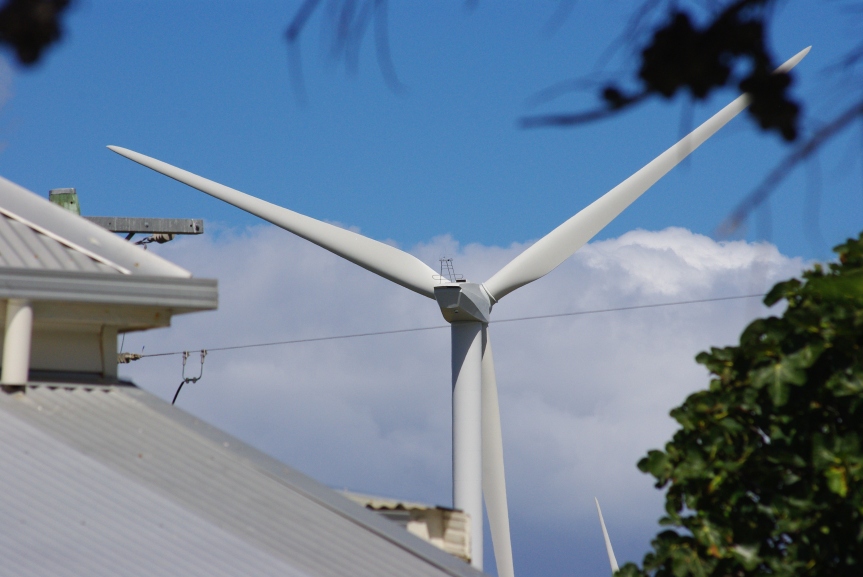Giant industrial wind turbines deliver a cacophony of thumping, grinding low-frequency noise for those forced to live with it. Anyone claiming that it’s not a miserable daily torment hasn’t lived with it, or they’re on the wind industry payroll.
A couple of years back, STT produced a timeline which highlighted how the wind industry and its pet acoustic consultants managed to set up ‘rules’ which have no relevance to the noise impacts experienced by wind farm neighbours and under which wind power outfits could ride roughshod over rural communities with complete impunity.
That post – Three Decades of Wind Industry Deception: A Chronology of a Global Conspiracy of Silence and Subterfuge – was picked up by not only those wind farm neighbours suffering adverse health effects, but by those in the scientific community involved in establishing the precise mechanism by which incessant, turbine generated low-frequency noise and infrasound causes adverse health effects, including sleep deprivation.
In a World first, Australia’s Administrative Appeals Tribunal (AAT) held that “noise annoyance” caused by wind turbine generated low-frequency noise and infrasound “is a plausible pathway to disease”, based on the “established association between noise annoyance and some diseases, including hypertension and cardiovascular disease, possibly mediated in part by disturbed sleep and/or psychological stress/distress.” The AAT also slammed wind turbine noise standards as irrelevant and, therefore, totally unfit for purpose: Australian Court Finds Wind Turbine Noise Exposure a ‘Pathway to Disease’: Waubra Foundation Vindicated
Here’s more vindication being laid out by Robert Bradley Jr.
Industrial Wind Turbines: Negative Health Effects (more evidence)
Master Resource
Robert Bradley Jr.
19 January 2022
“The weight of evidence indicates occurrences of adverse health effects (AHEs) from living and working near industrial wind turbines (IWTs).”
“Based on our analysis of clinical, biological, and experimental evidence and its concordance with the nine [Bradford Hill] criteria, we conclude that there is a high probability that emissions from IWTs, including infrasound and [Low Frequency Noise], result in serious harm to health in susceptible individuals living and/or working in their proximity.”
A recent issue of Environmental Disease provides more evidence of the negative health effects of industrial wind turbines. It is common sense: audible noise and infrasound, vibrations, and flicker light are unwanted intrusions for those who live remotely to get away from industrialization.
Professional environmentalists must look the other way given that they have little supply-side strategy otherwise against consumer-preferred, taxpayer-neutral mineral energies. But at the grassroots, some farmers can get paid off, but friends are few. Which leads to the question: why aren’t real environmentalists against industrial wind (and solar-slabs) increasingly taking over the landscape?
————————
Here are the major findings of Anne Dumbrille, Robert Y. McMurtry, Carmen Marie Krogh, “Wind turbines and adverse health effects: Applying Bradford Hill’s criteria for causation” (December 10, 2021).
ABSTRACT
The weight of evidence indicates occurrences of adverse health effects (AHEs) from living and working near industrial wind turbines (IWTs). Descriptions of the AHEs being reported by those living or working near the turbines are similar. While these occurrences have been associated with exposure to audible and inaudible noise annoyance, the causation of reported wind turbine‑associated health effects remains controversial.
Establishing an argument of causation of adverse health outcomes has important clinical, scientific, and societal implications. Bradford Hill (BH) criteria have been widely used to establish causality between an environmental agent and risk of disease or disability, but have not previously been used to evaluate the relationship between IWTs and AHEs. The objective was to apply the BH criteria to evaluate the relationship between IWTs and AHEs.
The nine criteria include the strength of the association, consistency, specificity, temporal sequence, biological gradient, plausibility, coherence, experimental evidence, and analogous evidence. These nine criteria have been applied to IWT exposure and reported AHEs using peer‑reviewed and other published literature that describes clinical, animal, and laboratory studies, testimony and reported experiences, and internet sources. Applying the BH criteria to the IWT‑related clinical, biological, and experimental data demonstrates that the exposure to IWTs is associated with an increased risk of AHEs.
This analysis concludes that living or working near IWTs can result in AHEs in both people and animals. Our findings provide compelling evidence that the risk of AHEs should be considered before the approval of wind energy projects and during the assessment of setback distances of proposed and operational projects.
CONCLUSION
Incontrovertible proof of causation has tended to be an elusive goal. The debate of determining causality associated with placing IWTs near family homes is similar to past controversies around the debate of causality from the use of tobacco products and from worker exposures to asbestos and coal. The “best available evidence” is the current standard, and it is our contention that the Bradford Hill criteria are that standard.
Based on our analysis of clinical, biological, and experimental evidence and its concordance with the nine BH criteria, we conclude that there is a high probability that emissions from IWTs, including infrasound and LFN, result in serious harm to health in susceptible individuals living and/or working in their proximity. These effects can be attributed to IWT‑related events such as recurring sleep disturbance, anxiety and stress, and likely others.
With the growing weight of evidence indicating this causation and the rapid proliferation of IWT installations globally, preventative actions should be taken, and policies implemented that are more cautiously protective of public health, safety, and welfare rather than wait for absolute certainty. More stringent regulation is needed to recognize, monitor, analyze, and document effects on the health of local residents and animals. Of concern is the lack of determination of the safe exposure cumulative dose of noise, including LFN and infrasound, for adults, the elderly, and particularly for fetuses and young children. There are no evidence‑based guidelines for setbacks of IWT; rather regulations have a wide variance across jurisdictions.
The concern is compounded by the lack of centralized vigilance monitoring for those who have constant, long‑term exposure while living in their homes. Our findings provide compelling evidence that there is a pressing need for risk assessment before deployment of IWT into rural community settings that consider more effective and precautionary setback distances. A margin of safety sufficient to prevent pathogenic LFN from being detected by the human vestibular system is paramount before proceeding with political or economic policies.
As written by Hill: “All scientific work is incomplete— whether it be observations or experimental. All scientific work is liable to be upset or modified by advancing knowledge. That does not confer upon us a freedom to ignore the knowledge we already have, or to postpone the action that it appears to demand at a given time.”
Master Resource



The action where human beings and all other creatures are concerned the Precautionary Principle as set out in the Rio Declaration (1992) should be the guide to anything which enables the environment to cause harm.
‘THE PRECAUTIONARY PRINCIPLE – ITS ORIGINS AND ROLE IN ENVIRONMENTAL LAW
David Cole LL.B., Master of Environmental Studies
Environmental Lawyer
Adelaide, South Australia.
February 2005’.
Yet it is not enacted where Industrial Wind Turbine installation is concerned due to narrow minded environmentalists and those who gain a financial asset each time one is installed.
Those who preach the dangers of a changing environment in many cases do so without even knowing the full ramifications of their actions. They are changing things but fail to accept they could also be doing immense harm.
They tend to forget the environment is needed by all. Changing the way we produce and utilise electrical energy is not by itself going to change the environment, that will take the whole human population working together and acknowledging everyone’s right to a healthy life and that there are many ways the environment can be helped.
What they forget is by not acknowledging and considering the harm these turbines cause is not going to saving the environment but destroying it in another way.
We all matter and all should be considered, whats the point of these international talkfest party’s if what they determine is ignored if it doesn’t fit into some mindset and financial requirements.
https://livestream.com/itmsstudio/events/8781285/videos/196181579
Please watch this livestream presentation of Dr. Mariana Alves-Pereira at the University of Waterloo. She was invited to come from Portugal by Professor Richard Mann. Together, they visited the homes of people being harmed in the largest project in Ontario.
She is an expert in harm to health from infrasound from a variety of sources, including industrial wind turbines.
Listen to what she had to say about the outrageous siting of wind turbines in Ontario. When she first saw the situation, she said she had never seen such stupidity in the siting of turbines. She was shocked. Peoples’ homes have been surrounded by clusters/arrays of turbines. These residents escape the harm as much as possible in order to protect themselves from the cumulative harm.
The turbine projects in rural Ontario have 20 year contracts and to date the government has still not protected the residents so that they can enjoy the safety, security and pleasure of their homes.